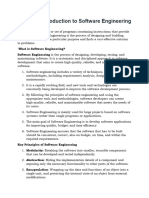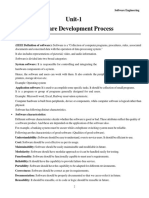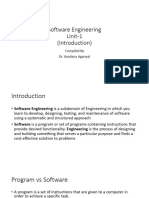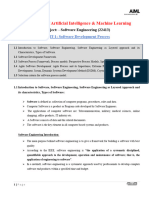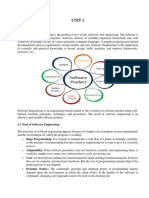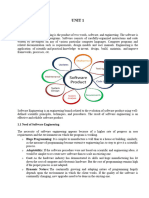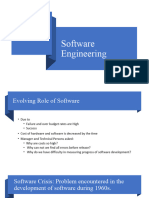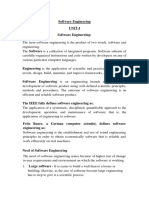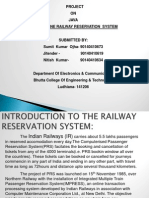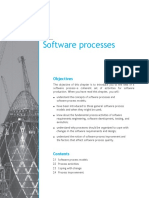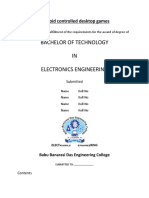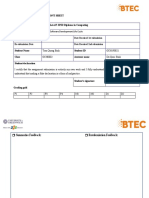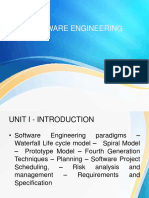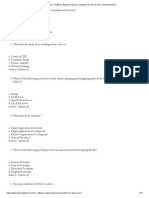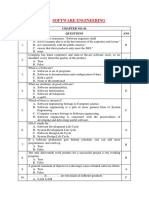0% found this document useful (0 votes)
16 views23 pagesSoftware Engineering Unit 1
Software engineering is a discipline focused on the systematic development of software products using established principles and methods to ensure efficiency and reliability. The document outlines the need for software engineering due to changing user requirements, the complexity of large software systems, and the importance of quality management. It also describes the software development life cycle (SDLC) and various models, including Waterfall, Iterative, Spiral, and V-Model, emphasizing the importance of risk management and quality attributes in software development.
Uploaded by
Parul SainiCopyright
© © All Rights Reserved
We take content rights seriously. If you suspect this is your content, claim it here.
Available Formats
Download as PDF, TXT or read online on Scribd
0% found this document useful (0 votes)
16 views23 pagesSoftware Engineering Unit 1
Software engineering is a discipline focused on the systematic development of software products using established principles and methods to ensure efficiency and reliability. The document outlines the need for software engineering due to changing user requirements, the complexity of large software systems, and the importance of quality management. It also describes the software development life cycle (SDLC) and various models, including Waterfall, Iterative, Spiral, and V-Model, emphasizing the importance of risk management and quality attributes in software development.
Uploaded by
Parul SainiCopyright
© © All Rights Reserved
We take content rights seriously. If you suspect this is your content, claim it here.
Available Formats
Download as PDF, TXT or read online on Scribd
/ 23











